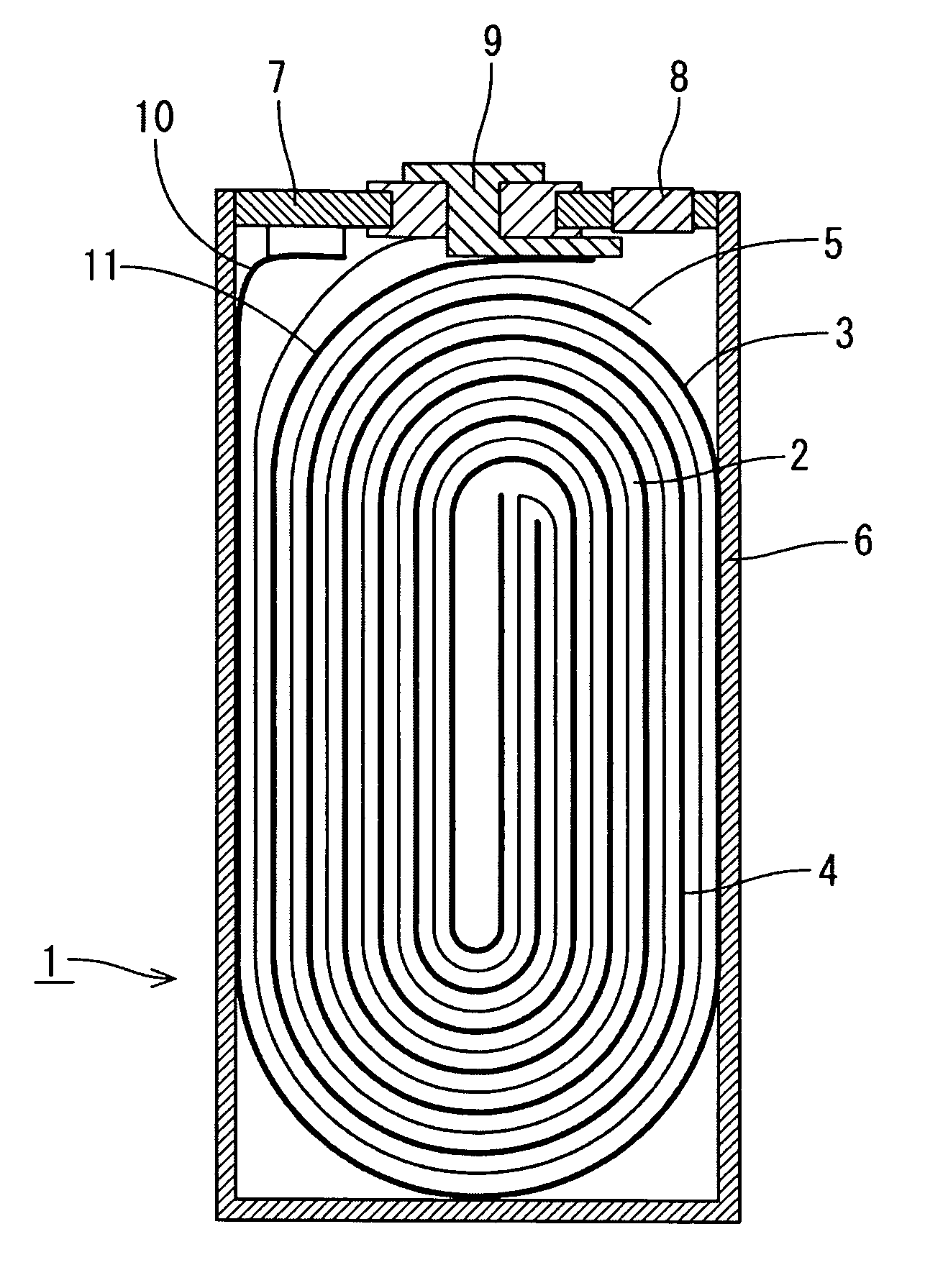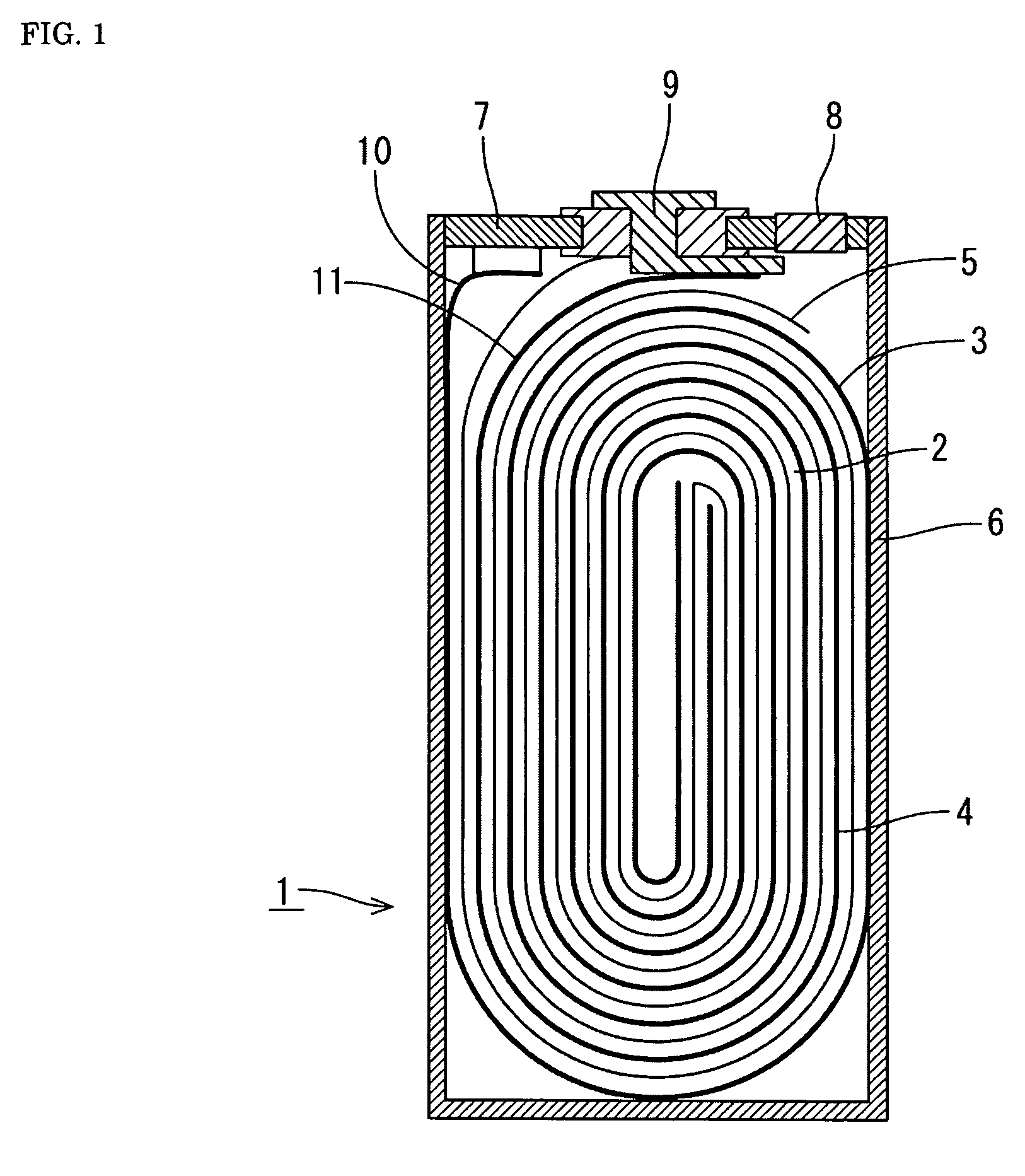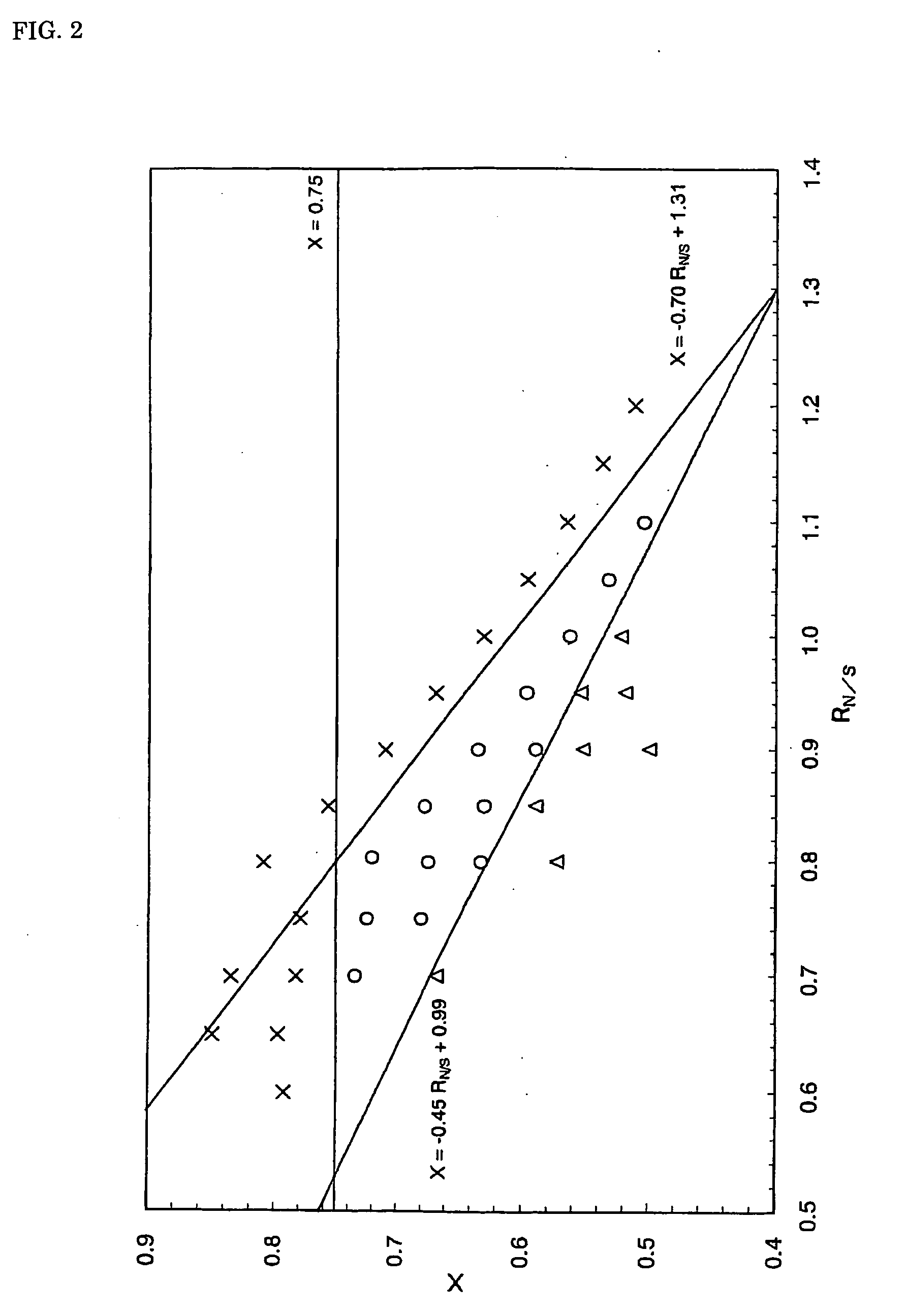Method for Charging Nonaqueous Electrolytic Secondary Cell and Nonaqueous Electrolytic Secondary Cell
a nonaqueous electrolyte and secondary cell technology, applied in the direction of secondary cell servicing/maintenance, cell components, electrochemical generators, etc., can solve the problems of insufficient life performance of manganese-based nonaqueous electrolyte secondary battery and inability to obtain sufficient life performance, etc., to achieve the effect of improving life performan
- Summary
- Abstract
- Description
- Claims
- Application Information
AI Technical Summary
Benefits of technology
Problems solved by technology
Method used
Image
Examples
Embodiment Construction
[0037] Next, the effects of the present invention will be described specifically by way of examples, but the present invention is not limited to the examples.
[0038]
[0039]FIG. 1 is a schematic sectional view of a prismatic nonaqueous electrolyte secondary battery used in the following examples and comparative examples. The nonaqueous electrolyte secondary battery 1 is configured by housing a flat wound electrode group 2 in which a positive electrode plate 3 composed by applying positive electrode mixture to a positive electrode current collector composed of aluminum foil and a negative electrode plate 4 composed by applying negative electrode mixture to a negative electrode current collector composed of copper foil are wound through a separator 5, and nonaqueous electrolyte in a battery case 6.
[0040] A battery lid 7 having a safety valve 8 is fixed to the battery case 6 by laser welding; a negative electrode terminal 9 is connected to the negative electrode plate 4 through a negati...
PUM
| Property | Measurement | Unit |
|---|---|---|
| voltage | aaaaa | aaaaa |
| mole ratio | aaaaa | aaaaa |
| mole ratio | aaaaa | aaaaa |
Abstract
Description
Claims
Application Information
 Login to View More
Login to View More - R&D
- Intellectual Property
- Life Sciences
- Materials
- Tech Scout
- Unparalleled Data Quality
- Higher Quality Content
- 60% Fewer Hallucinations
Browse by: Latest US Patents, China's latest patents, Technical Efficacy Thesaurus, Application Domain, Technology Topic, Popular Technical Reports.
© 2025 PatSnap. All rights reserved.Legal|Privacy policy|Modern Slavery Act Transparency Statement|Sitemap|About US| Contact US: help@patsnap.com



